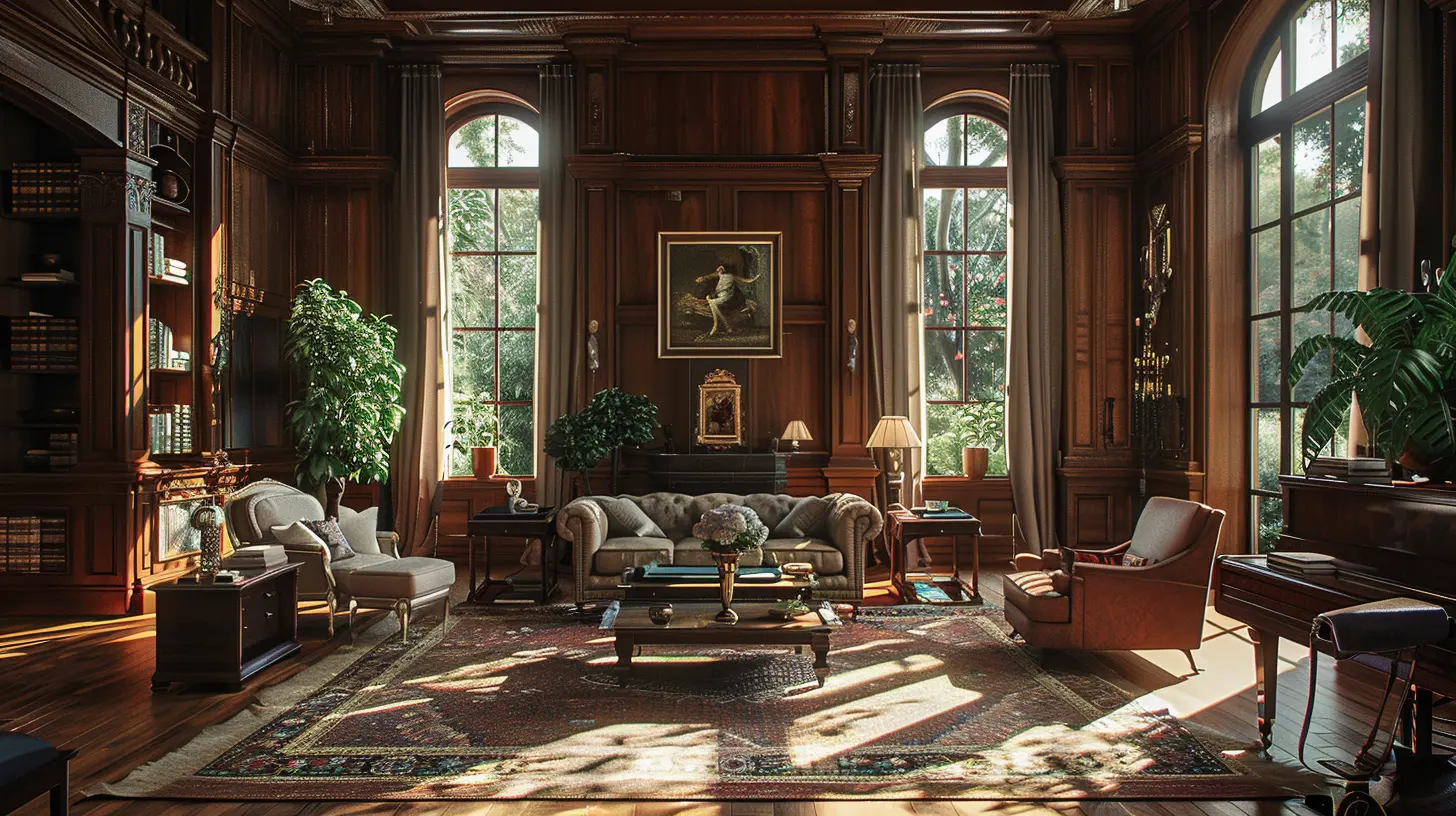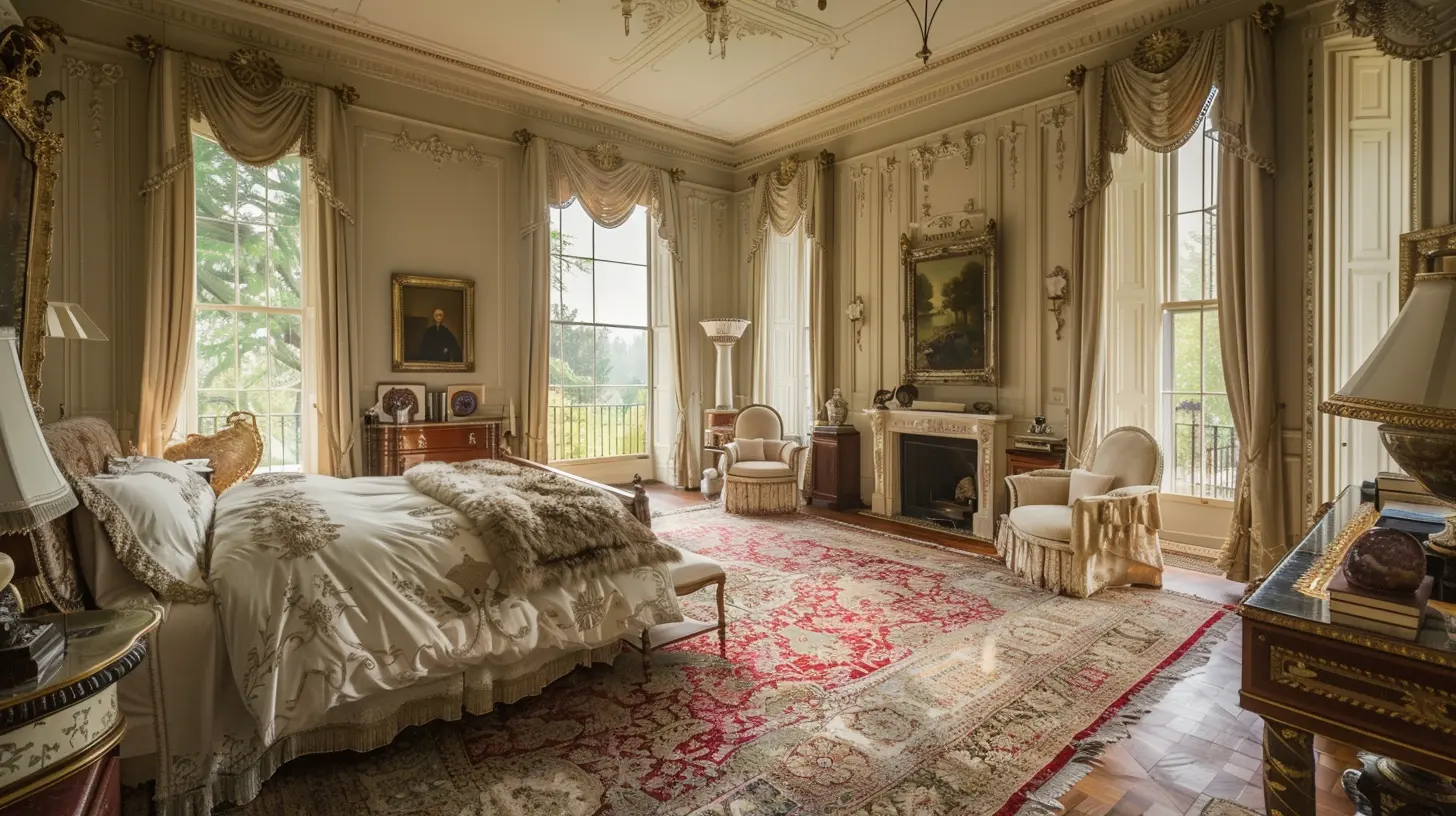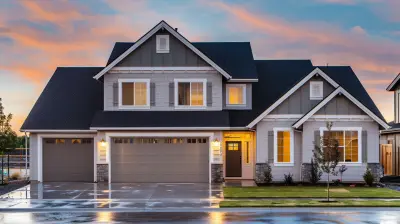Design Inspiration from the Interiors of Classic Historic Homes
4 July 2025
There’s something undeniably magical about stepping into a historic home. The grandeur, the craftsmanship, the sheer weight of history hanging in the air—it’s enough to leave anyone in awe. But beyond their nostalgic charm, these homes hold secrets within their walls. They whisper stories through intricate woodwork, gilded mirrors, and opulent chandeliers. And guess what? You can bring those stories into your own space.
If you’ve ever dreamed of infusing your home with the timeless elegance and character of a classic historic estate, you’re in the right place. Let’s take a deep dive into the design elements that make these homes so enchanting—and how you can steal a little of that magic for yourself. 
1. The Beauty of Grand Entrances
Ever wondered why historic homes always seem to make such a statement when you walk in? It’s all about the entrance. From sweeping staircases to lavish foyers with checkered marble floors, these homes knew how to make an impact.How to Incorporate This:
- Opt for a bold front door with decorative moldings or a vintage-inspired knocker.- Add an ornate chandelier in your entryway to create a sense of importance.
- Consider a floor medallion or patterned tile to echo the grandeur of old-world estates.
First impressions matter, and classic homes knew that better than anyone. Your entryway should feel like a warm embrace with a hint of mystery—after all, what’s behind the next door? 
2. Ornate Molding & Millwork
Let’s talk about the kind of details that make a home feel rich—literally and figuratively. Crown molding, wainscoting, and intricate millwork were staples in historic homes. These weren’t just thrown in as an afterthought; they were carefully crafted to add depth, texture, and elegance.How to Incorporate This:
- Install crown molding to add a regal touch to any room.- Use wainscoting or picture frame molding to break up large wall spaces.
- If budget allows, seek out carved wood elements such as ceiling medallions or fireplace mantels.
Simple drywall just can’t compete with the soul of detailed millwork. It’s like the difference between a plain vanilla cake and one that’s been beautifully frosted—both are good, but one is unforgettable. 
3. Dramatic Color Palettes
Modern homes often play it safe with neutral tones, but historic interiors? They didn’t shy away from drama. Deep, moody hues like emerald green, oxblood red, and navy blue graced the walls, adding instant sophistication.How to Incorporate This:
- Try a deep, rich hue in a study, library, or dining room for an intimate vibe.- Use wallpaper with intricate patterns to elevate the look further.
- Pair bold colors with antique gold or brass accents to enhance their vintage charm.
Dark colors have a way of wrapping a space in mystery, harking back to candlelit evenings and whispered conversations in drawing rooms. It’s color psychology at its finest. 
4. Vintage Lighting with a Story to Tell
Historic homes don’t just have light fixtures—they have conversation starters. Crystal chandeliers, brass sconces, candle-style pendants… each piece was carefully selected to reflect grandeur.How to Incorporate This:
- Swap out builder-grade lighting for vintage-inspired pieces with character.- Shop antique stores for one-of-a-kind chandeliers or sconces.
- Use warm lighting to replicate the soft glow of candlelit evenings.
Lighting isn’t just about functionality; it sets the entire mood. Think of it like good background music—it’s subtle, but it makes all the difference.
5. Statement Fireplaces as Focal Points
In historic homes, fireplaces weren’t just about warmth; they were the heart of the home. Whether carved from marble or decorated with ornate mantels, these fireplaces were works of art.How to Incorporate This:
- If you have a fireplace, restore it with a detailed mantel or vintage tile surround.- No fireplace? No problem. Faux fireplaces or electric inserts can still create that classic ambiance.
- Style the mantel with antique mirrors, candleholders, and vintage books to complete the look.
There’s something about a fireplace that draws people in—like a storyteller by a campfire. It’s cozy, nostalgic, and screams old-world charm.
6. Antique Furniture & Timeless Pieces
Historic interiors are like curated time capsules. Every piece of furniture tells a story, and none of it looks mass-produced.How to Incorporate This:
- Mix antique or vintage pieces with modern decor for a unique, lived-in feel.- Invest in quality craftsmanship—solid wood pieces, hand-carved details, and rich upholstery.
- Look for timeless shapes like tufted Chesterfield sofas, cabriole legs, and wingback chairs.
A home loaded with identical furniture pieces lacks personality. Instead, aim for that well-traveled collector’s look—like your home has evolved over generations.
7. Opulent Fabrics & Textures
If historic interiors had one superpower, it would be layering texture. Think velvet drapes, Persian rugs, and embroidered upholstery. Everything felt luxurious.How to Incorporate This:
- Drape heavy, floor-length curtains for a dramatic effect.- Layer rugs (yes, rugs on top of rugs!) to add visual depth.
- Use textiles like brocade, silk, or velvet for throw pillows, upholstery, or bedding.
Texture is the secret weapon of a well-designed space. When done right, it can make even a small apartment feel like an aristocrat’s estate.
8. Gilded Mirrors & Wall Decor
A historic home without a grand mirror? Unheard of. These oversized, gilded beauties weren’t just for reflection—they were design statements that made spaces feel grander.How to Incorporate This:
- Hang an ornate mirror above a fireplace or console table for instant elegance.- Use aged or antique-style mirrors to create a sense of history.
- Consider gallery walls with vintage artwork for that old-world charm.
Mirrors don’t just bounce light around—they add a sense of mystery. Who else has stood before that mirror over the years?
9. Library or Study Nooks
Classic homes always had a quiet retreat for reading or contemplation. Libraries were wall-to-wall bookshelves, inviting deep thought and reflection.How to Incorporate This:
- Dedicate a small corner for a reading nook with a comfy armchair and a warm lamp.- Install floating bookshelves or a full built-in if you have the space.
- Add classic elements like brass bookends, globe-topped tables, or a vintage writing desk.
In a world obsessed with screens, a home library feels like the ultimate luxury—a quiet escape from the noise.
10. The Patina of Time
Finally, what makes historic homes historic is their imperfections. Faded paint, worn leather, aged wood—these things tell a story. Modern homes often strive for perfection, but sometimes, a little wear and tear makes a space feel even more authentic.How to Incorporate This:
- Embrace patina—don’t be afraid of aged finishes on furniture or decor.- Opt for reclaimed wood for tables or flooring to add character.
- Mix new and old pieces to create that lived-in charm.
There’s beauty in imperfection. After all, the best stories aren’t told in brand-new pages—they’re found in well-worn books with dog-eared corners.
Wrapping It Up
So, what’s the takeaway? Historic homes are a treasure trove of design inspiration, blending elegance, craftsmanship, and storytelling. Whether it’s an antique mirror, a moody paint color, or the romance of a velvet curtain, you can bring pieces of the past into your home without feeling stuck in a bygone era.The key? Balance. Mix history with modernity, nostalgia with functionality, elegance with personality. Because at the end of the day, your home should tell your story—just with a little inspiration from the past.
all images in this post were generated using AI tools
Category:
Historic HomesAuthor:

Kingston Estes
Discussion
rate this article
1 comments
Siena Sheppard
Classic historic homes are not just relics; they are bold statements of style and craftsmanship. Let their timeless designs inspire your modern spaces—embrace the elegance, unapologetically!
July 17, 2025 at 2:35 AM

Kingston Estes
Thank you! I completely agree—classic homes offer invaluable inspiration for blending timeless elegance with modern design.


